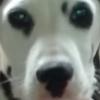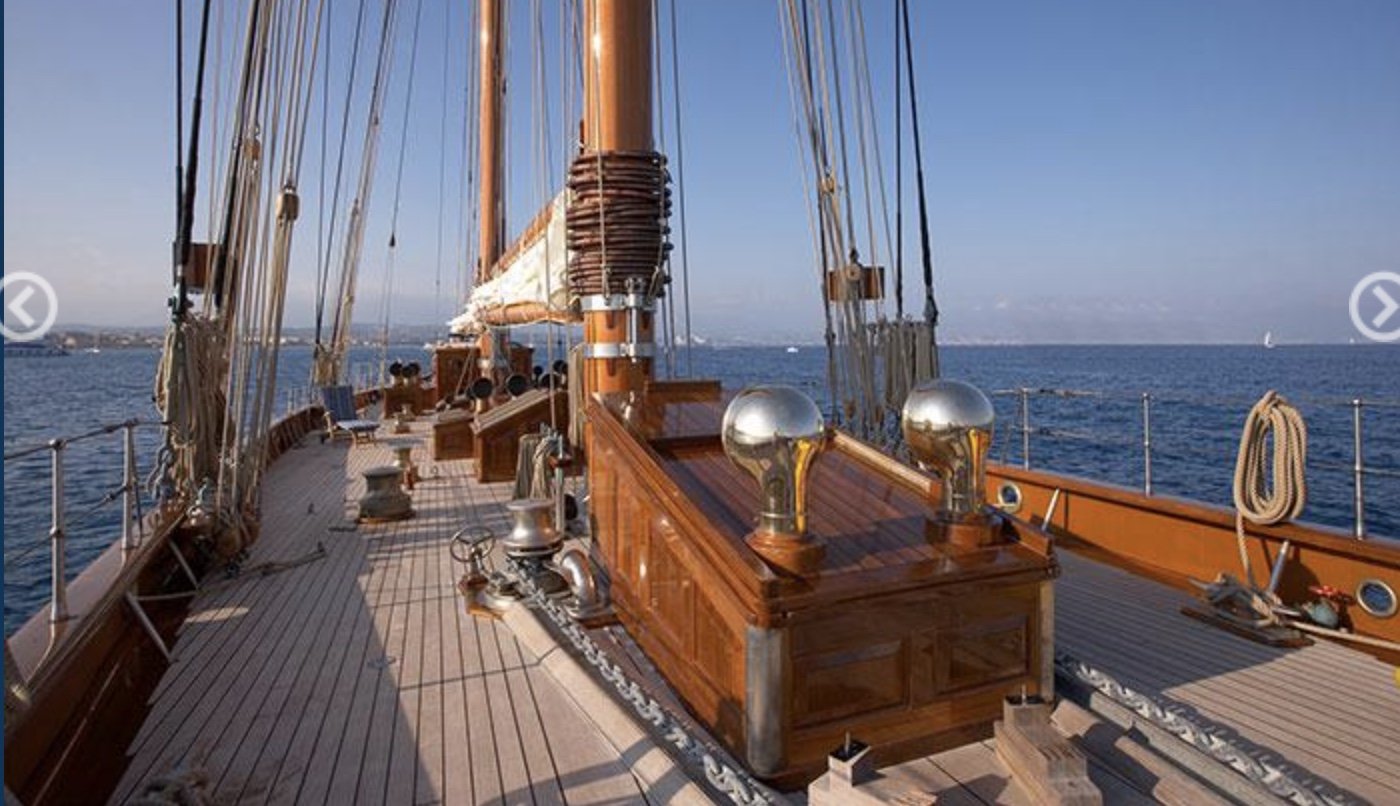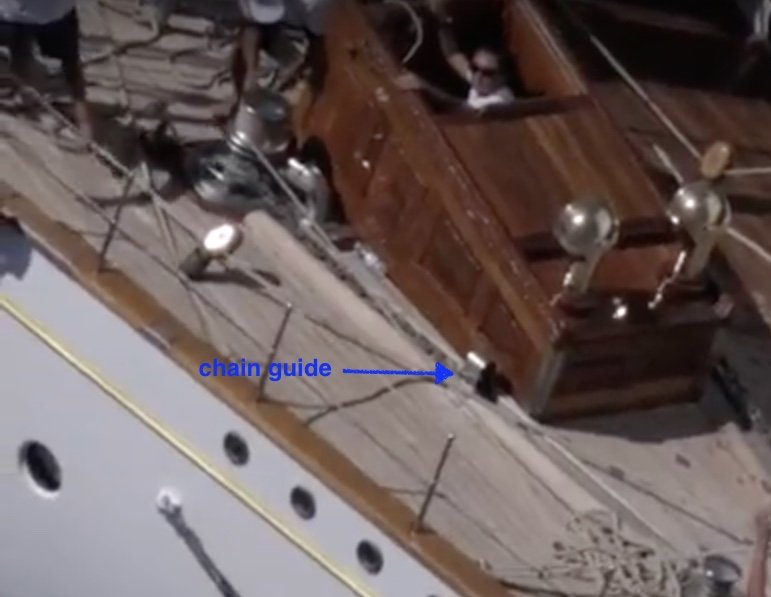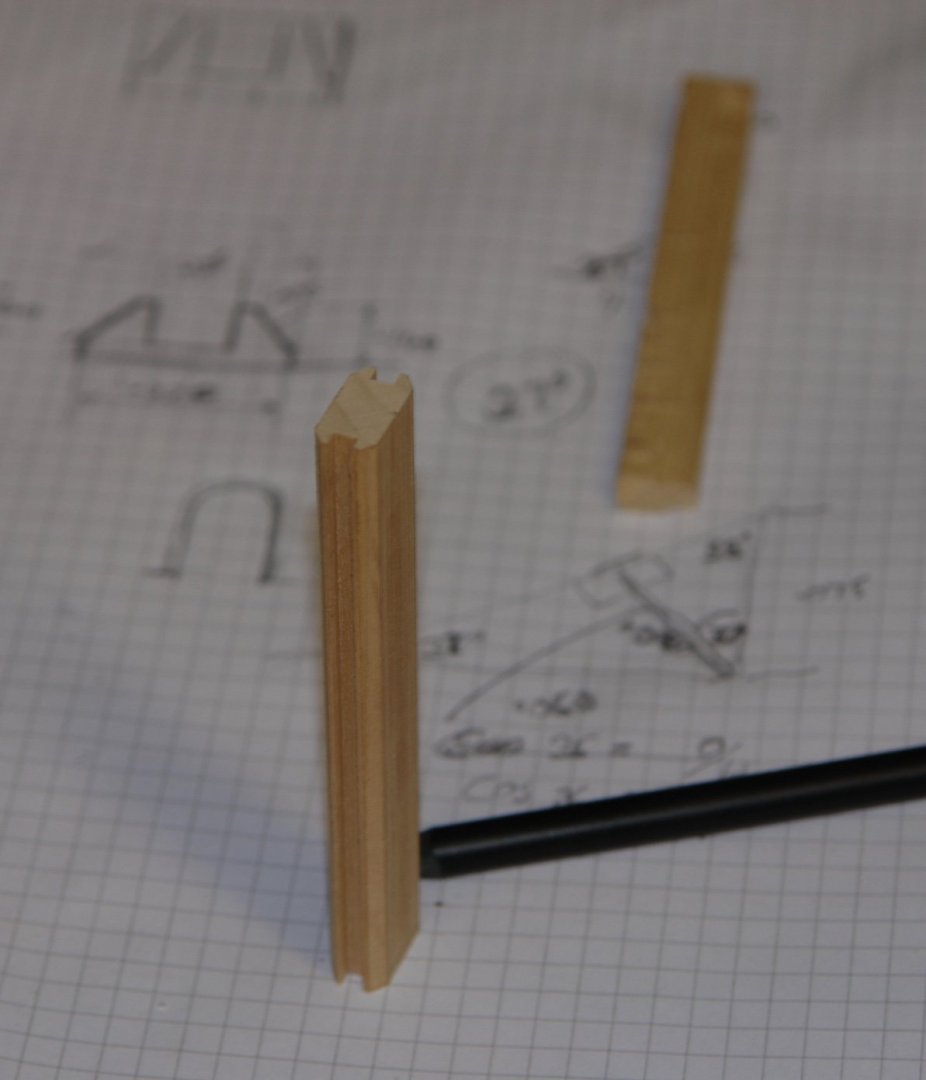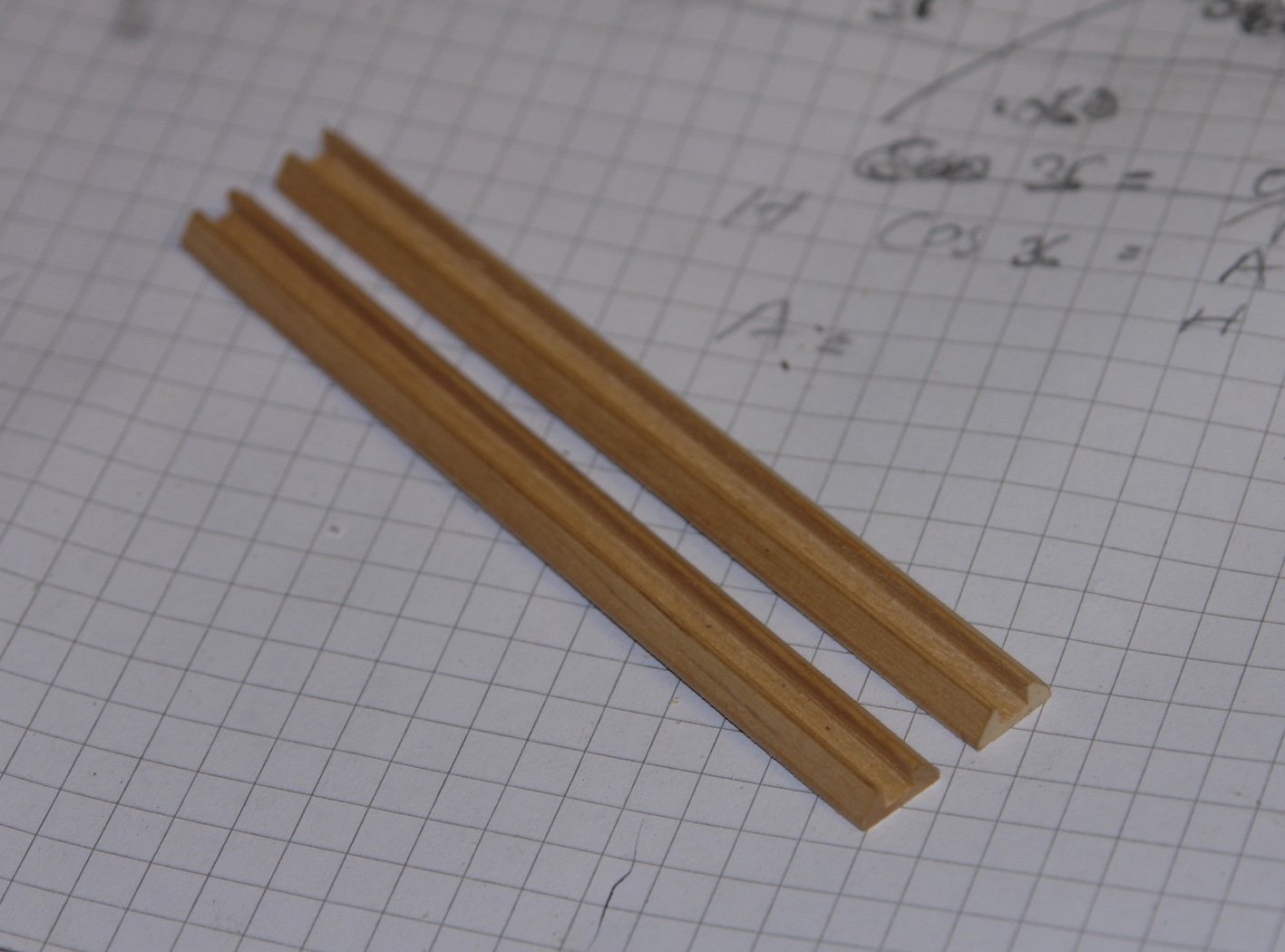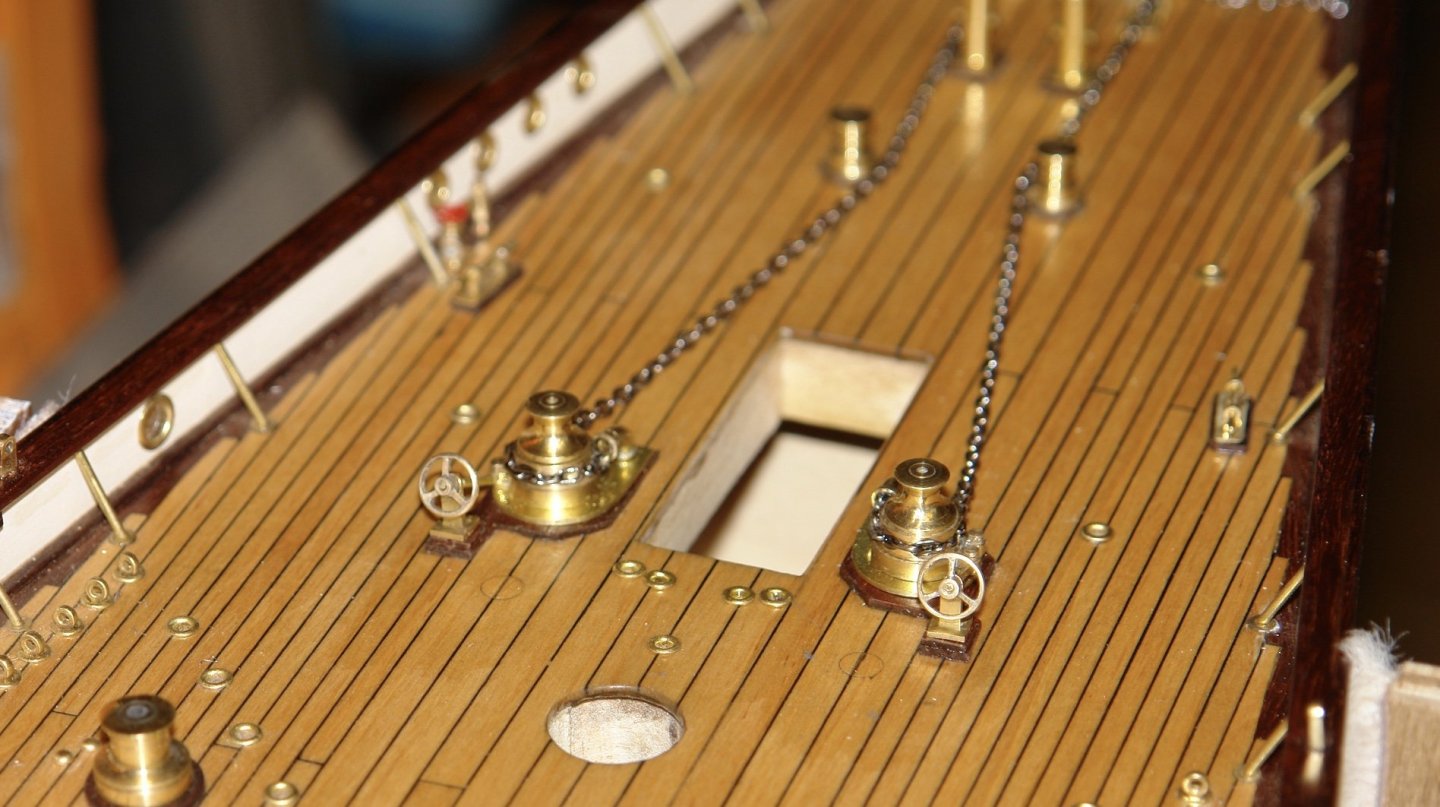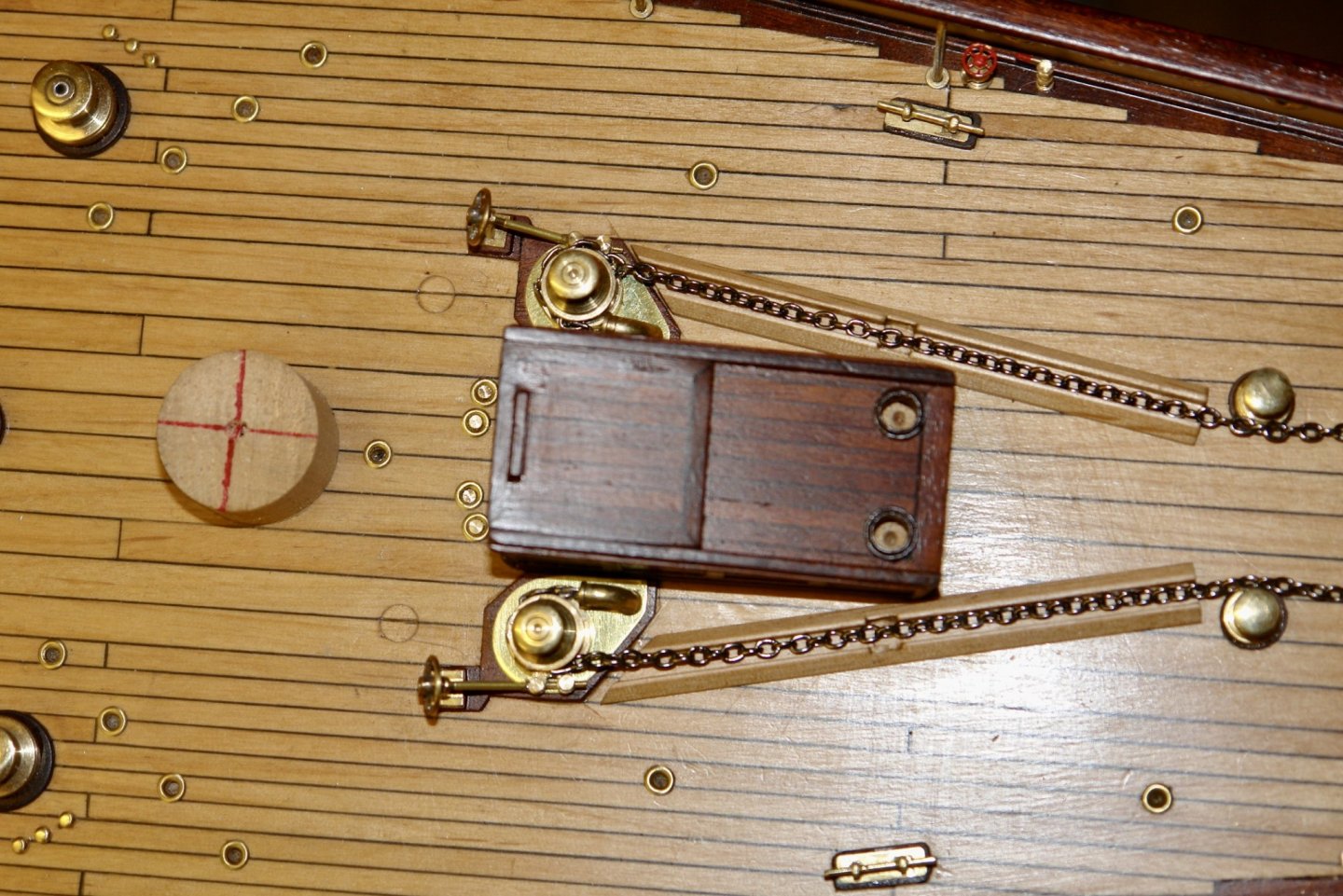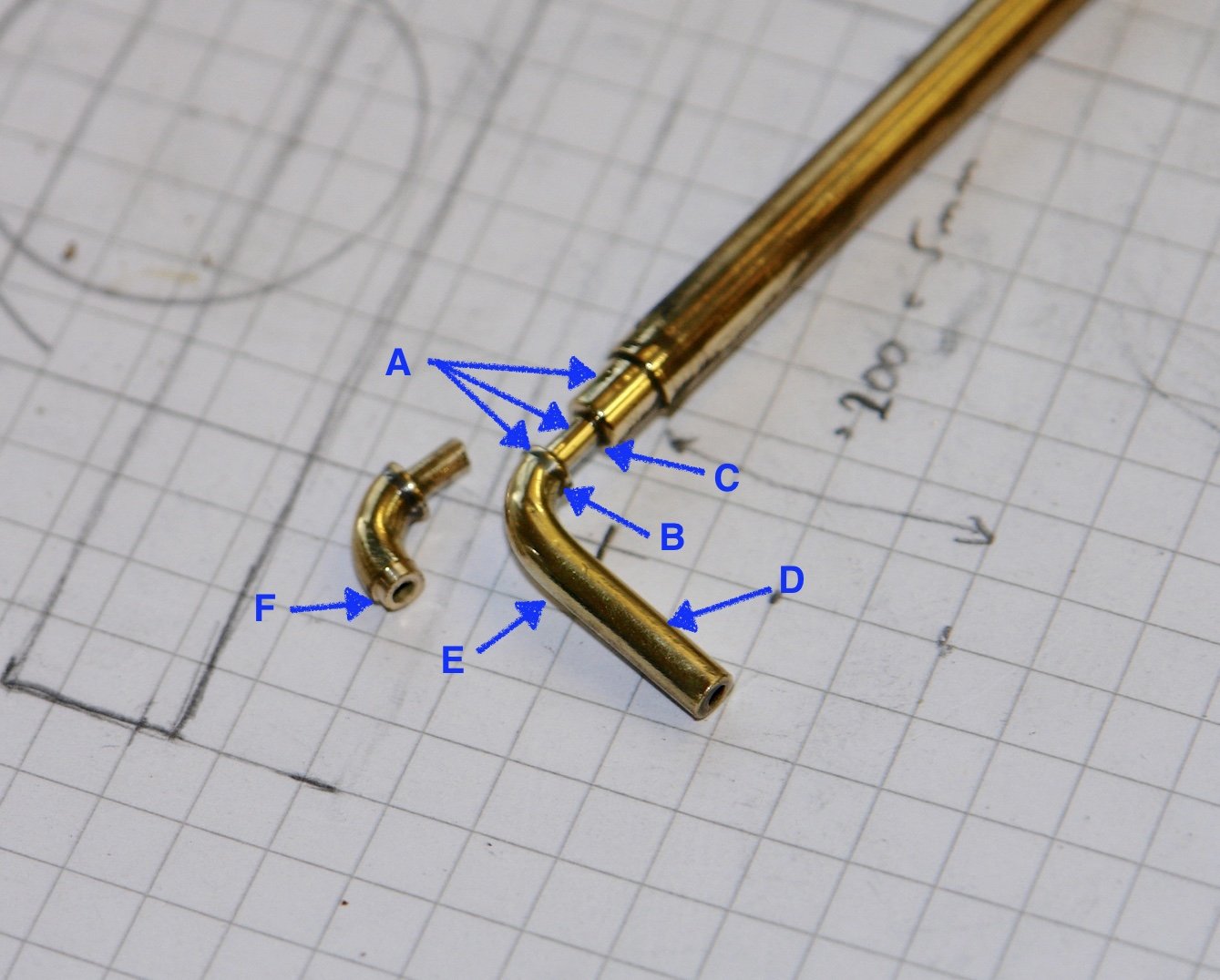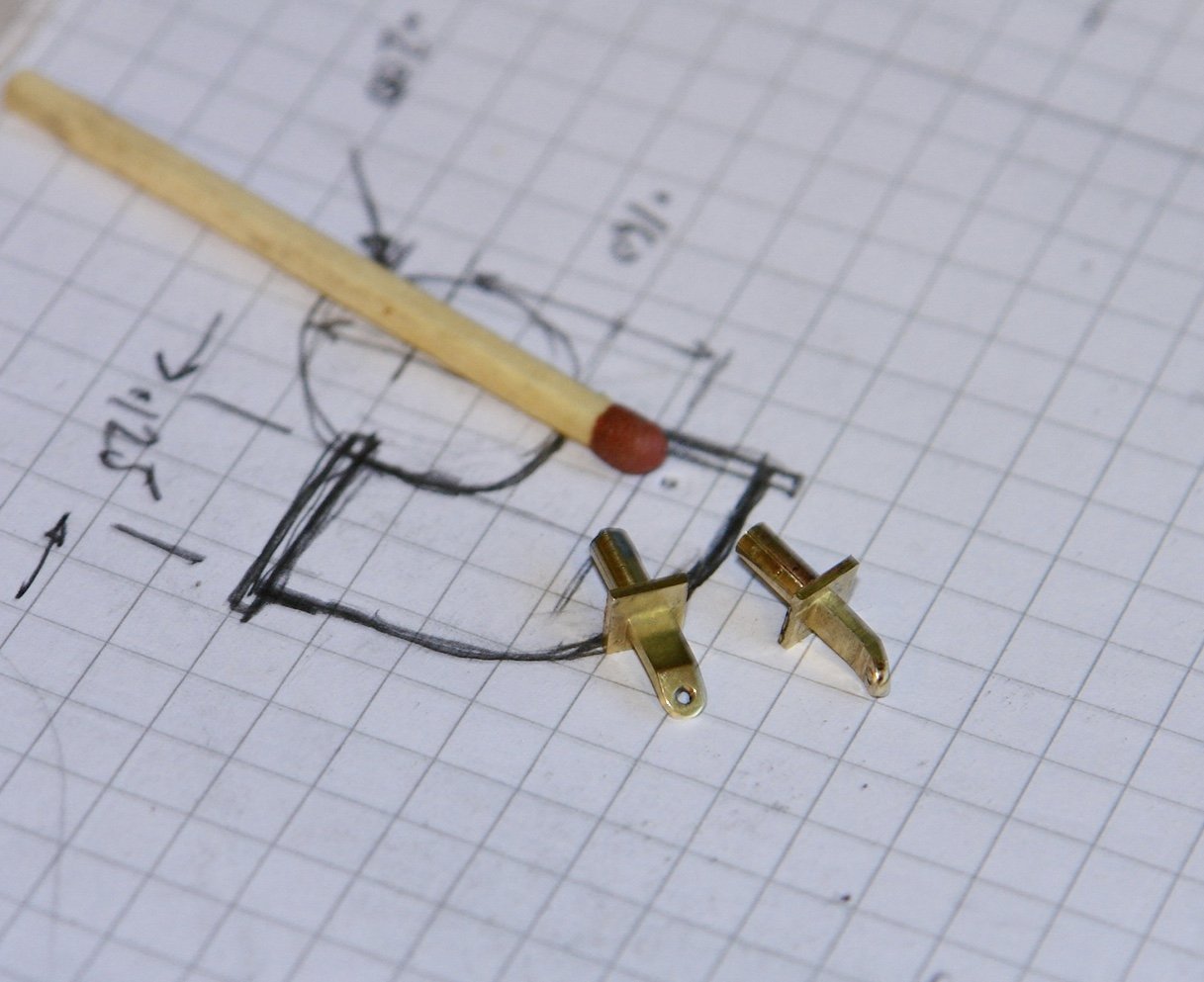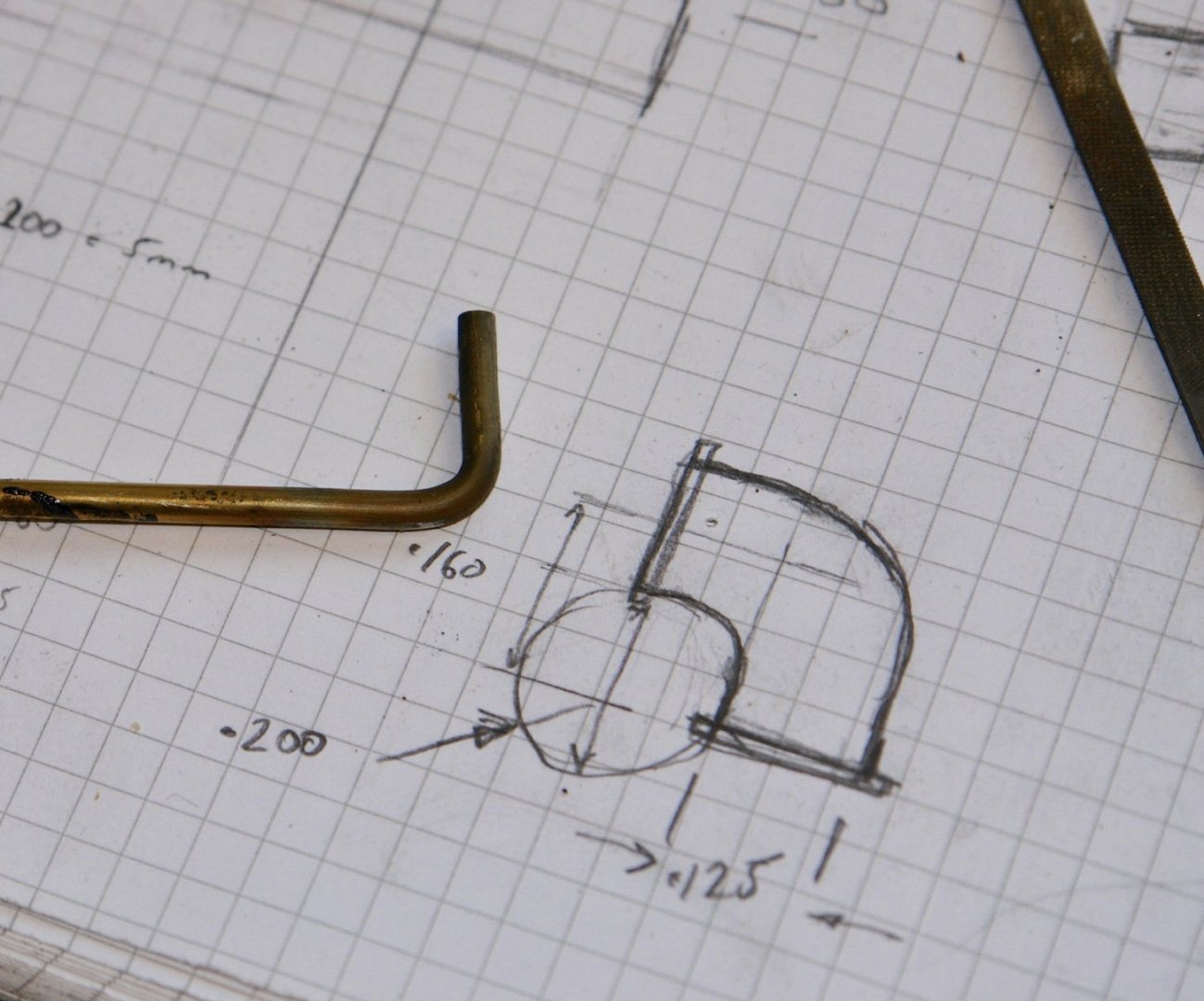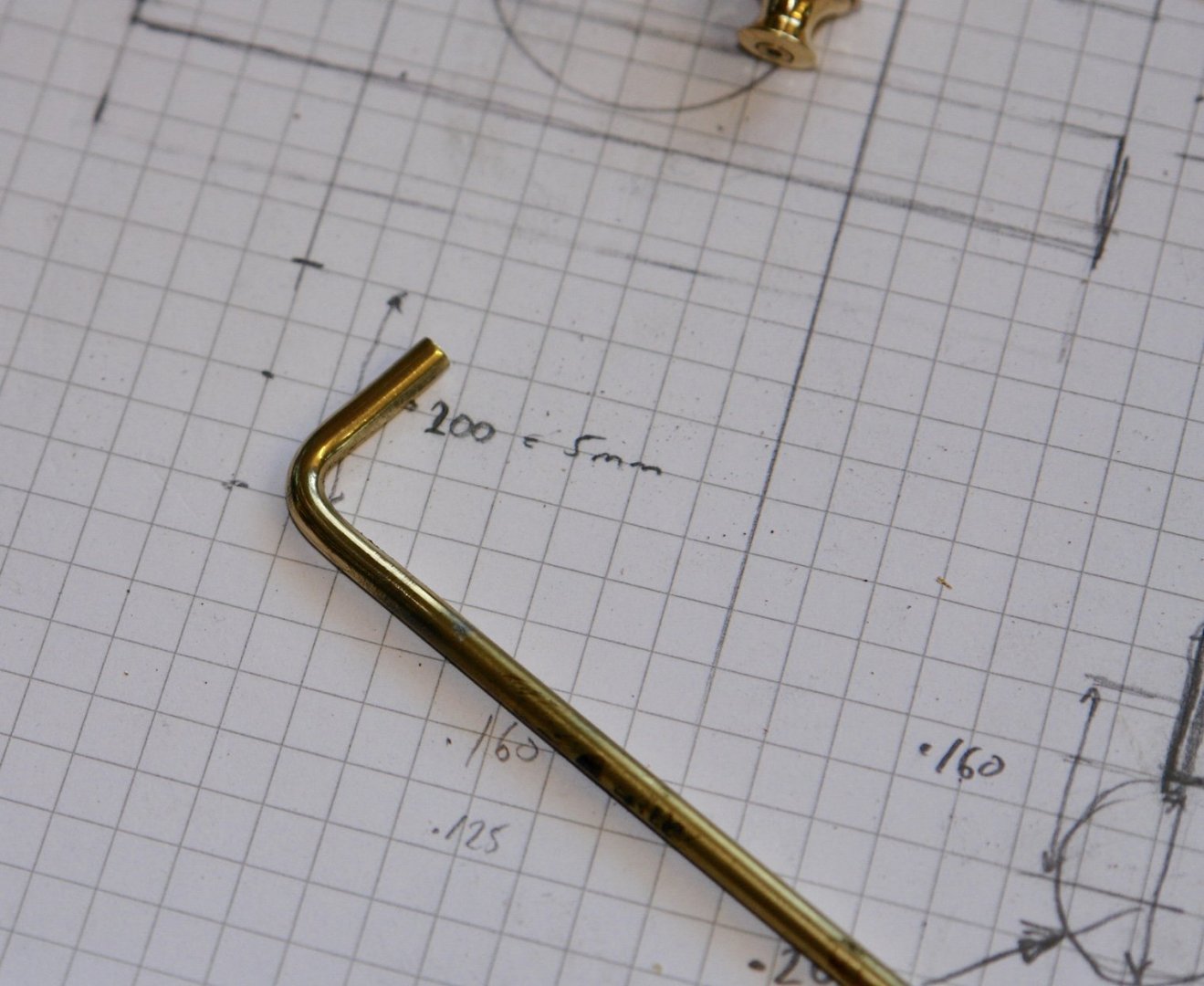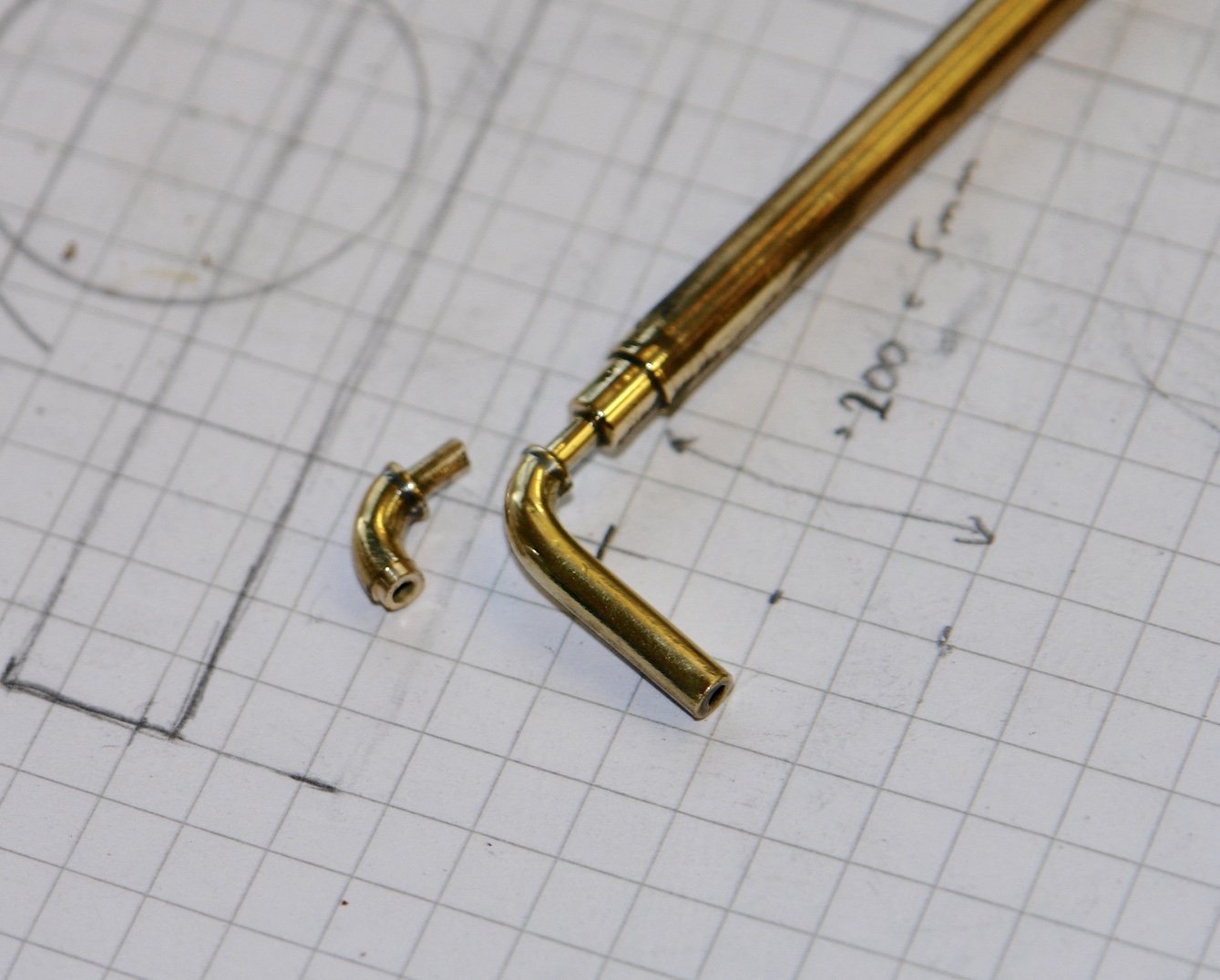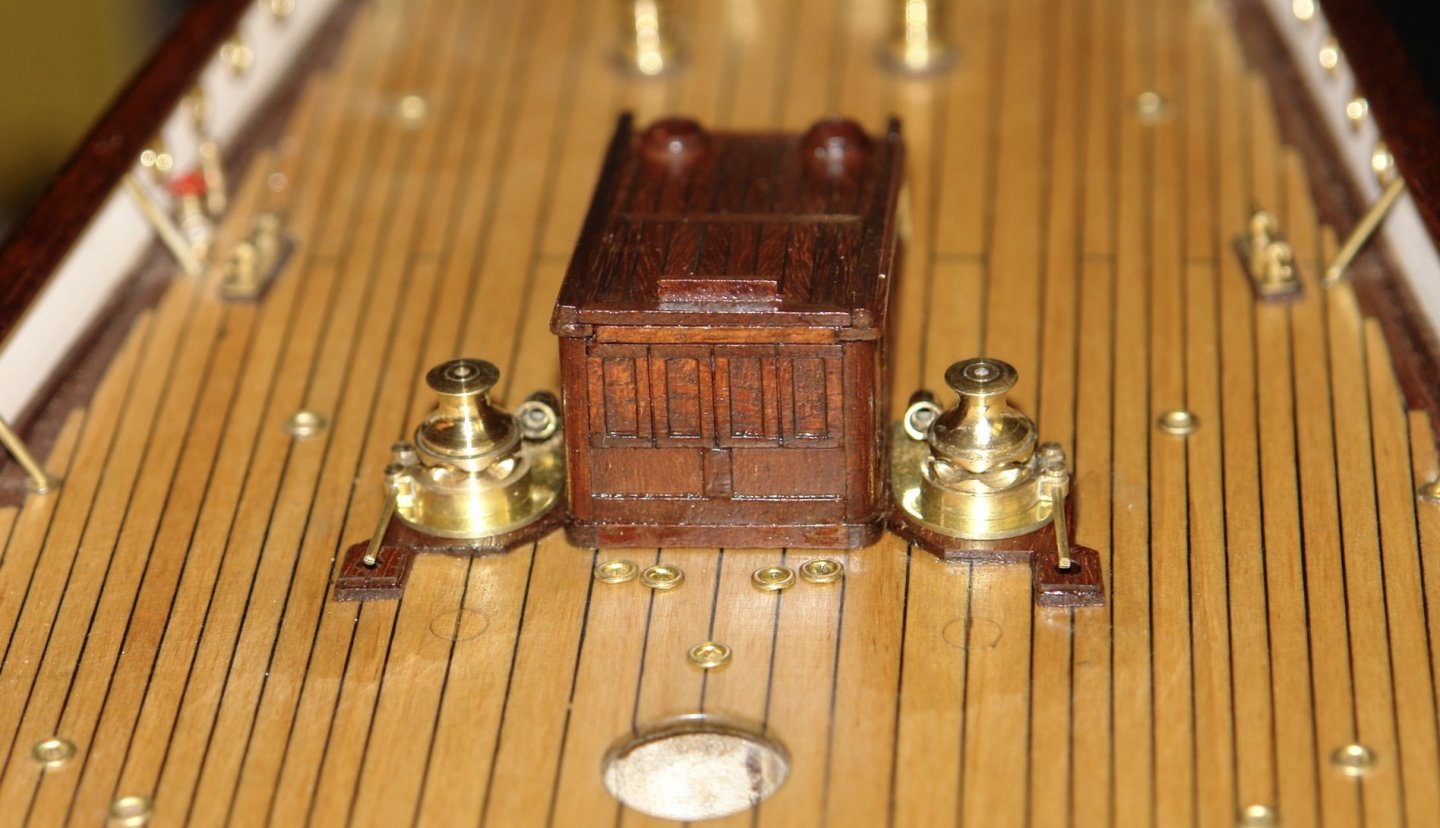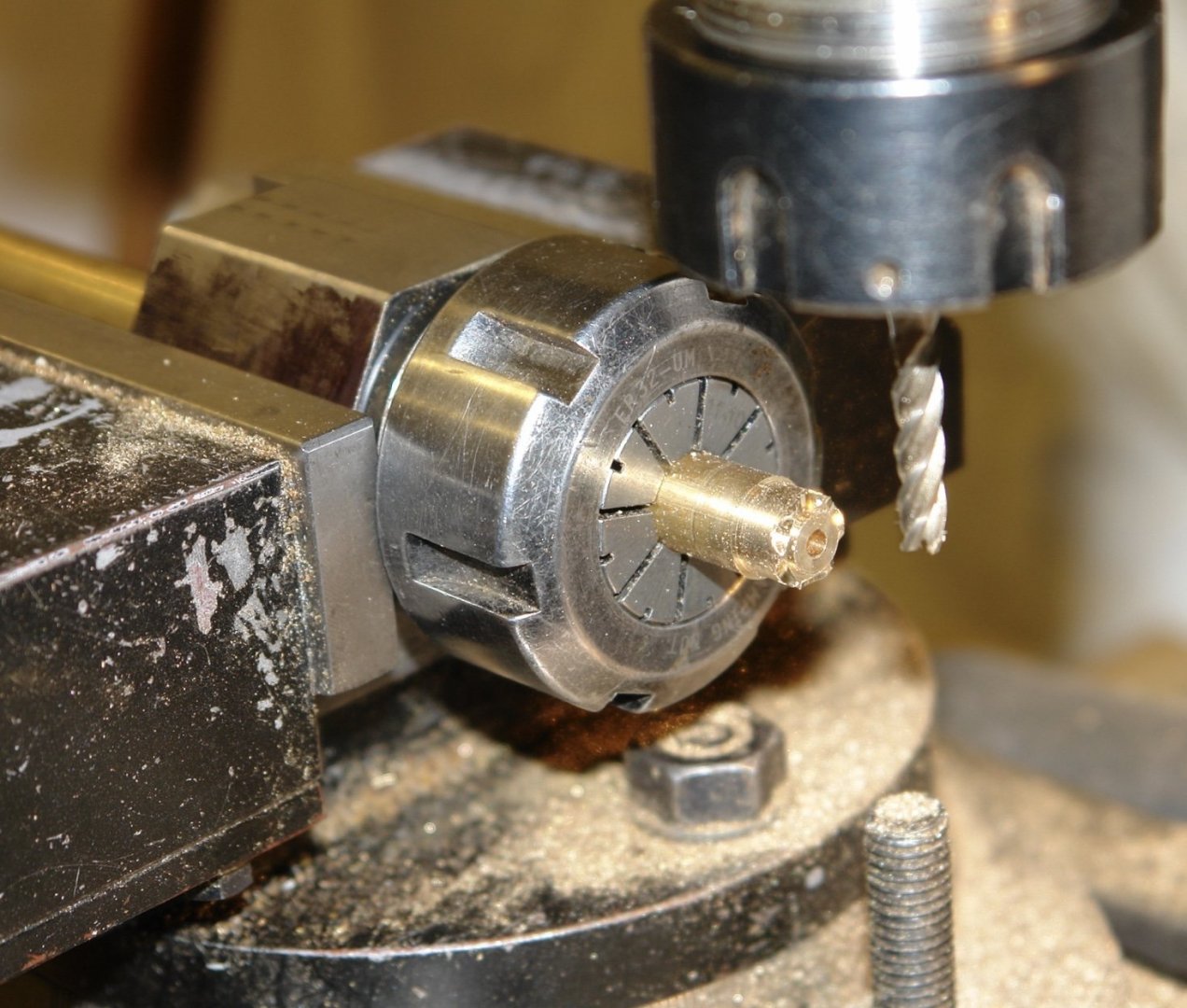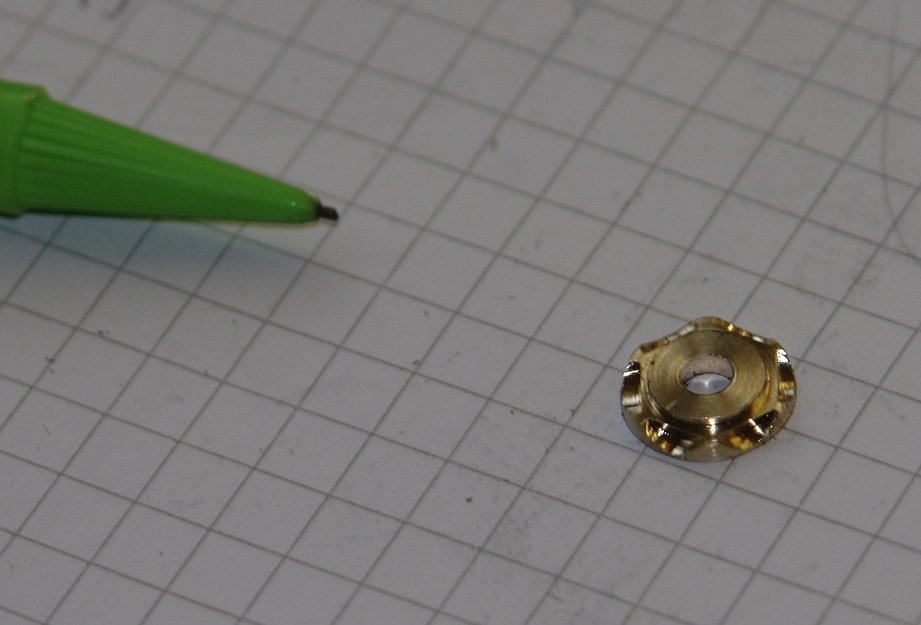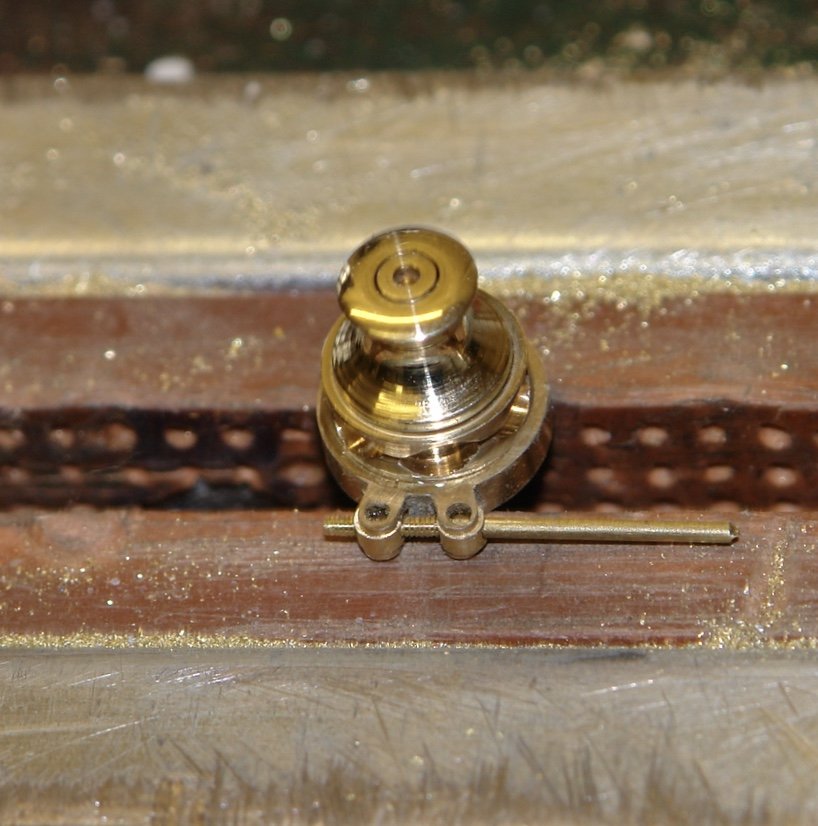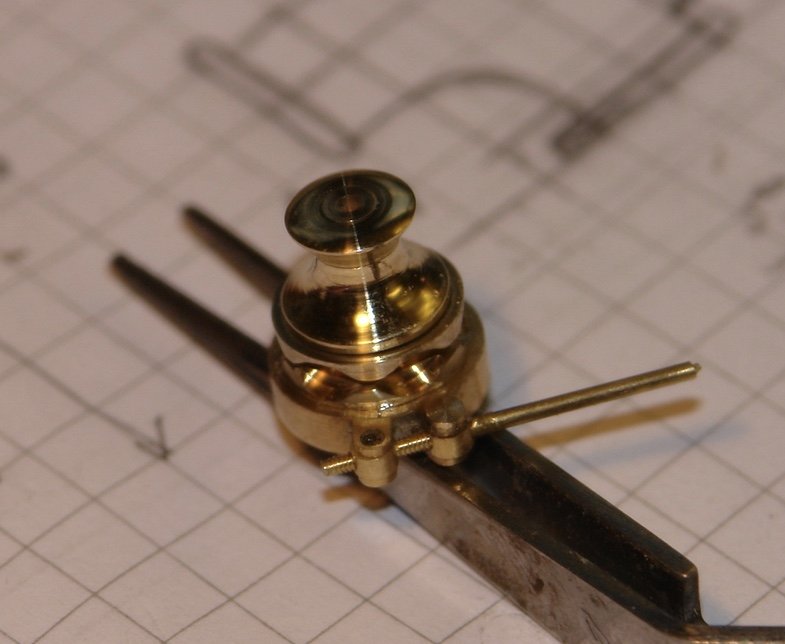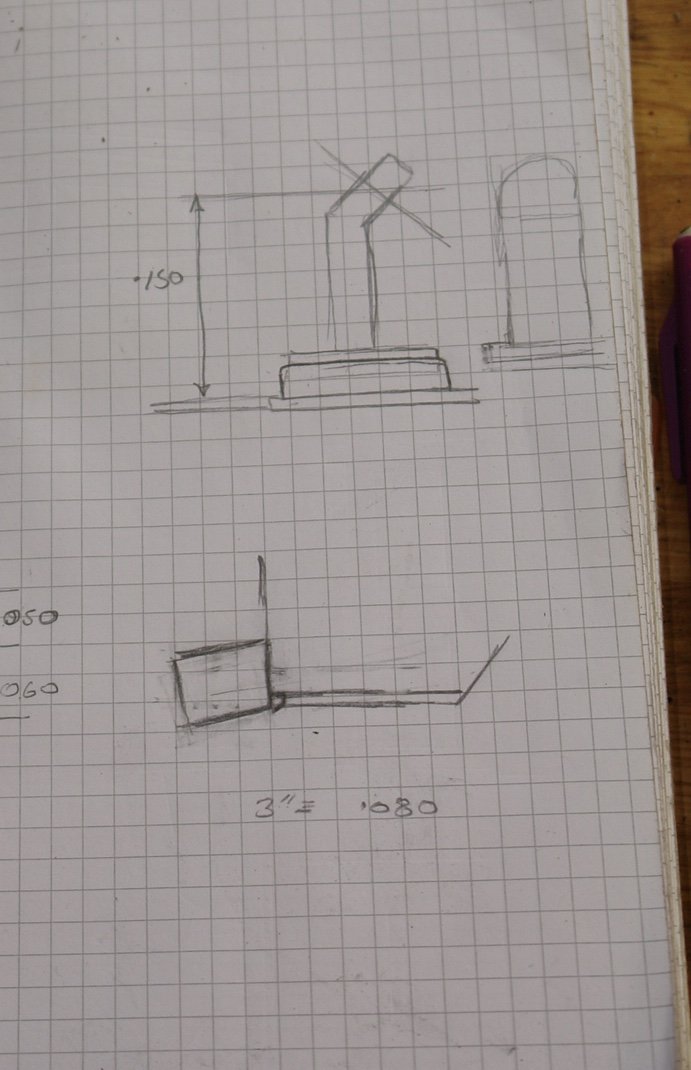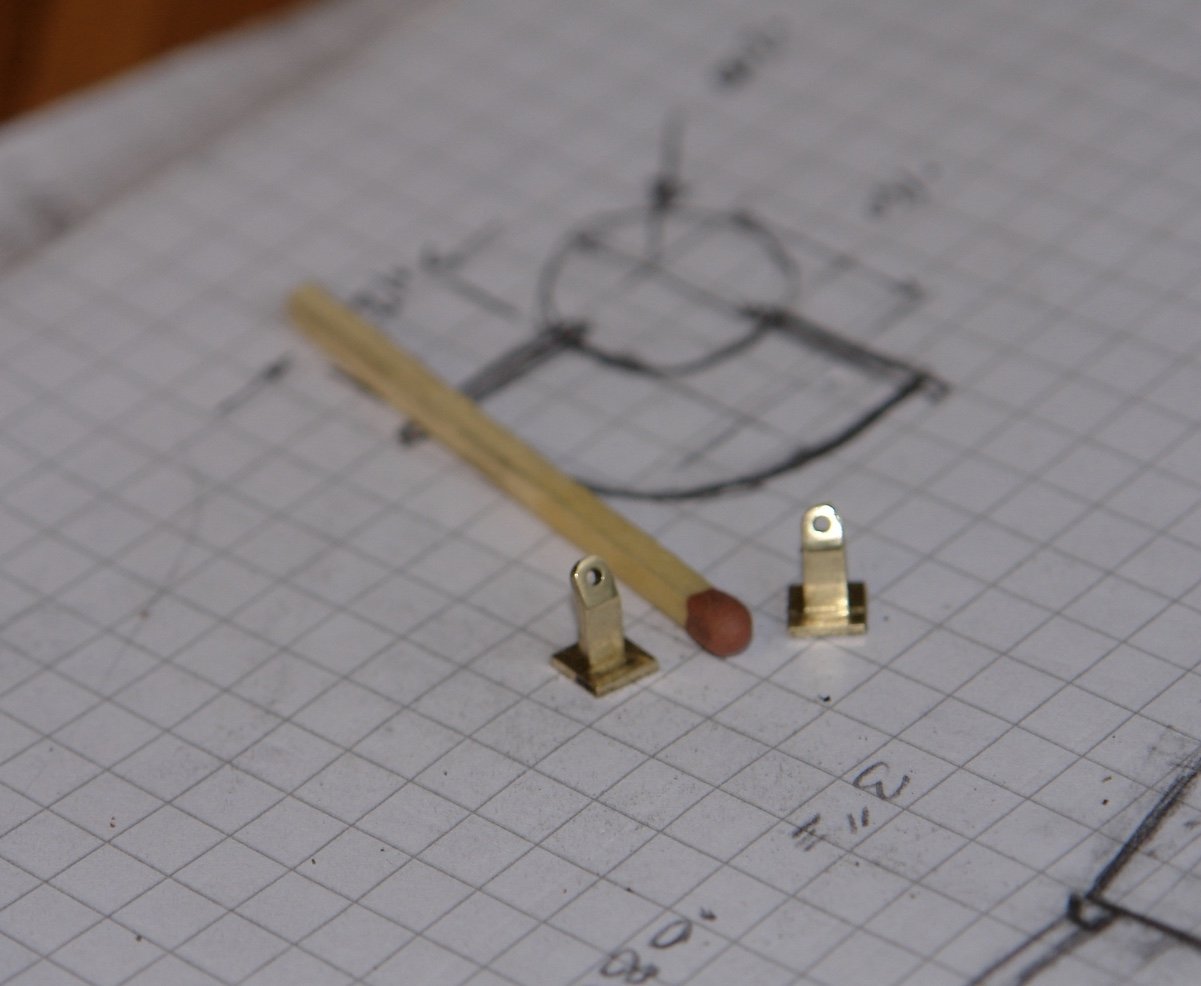-
Posts
3,941 -
Joined
-
Last visited
Content Type
Profiles
Forums
Gallery
Events
Everything posted by KeithAug
-
Sometimes the eye strain gets a bit much and I need to return to the full sized world of machining. I needed to complete a project that had been on the shelf for about 7 years and I spent a couple of days doing so. I made 4 steel rods 12mm diameter and just over 150mm long, axially drilled and tapped at both ends. I also drilled a cross hole about 10mm from the upper end. Additionally i needed 2 shorter and larger diameter pieces which I made from a printer roller salvaged some time ago. All were polished. I also needed 8 small and 2 large conical washers, cut from 6mm plate and then turned on a mandrel mounted in the lathe. Once tuned the washers were polished. Once made the parts were assembled and soft rubber pads were glued to the 2 large washers and 4 of the smaller washers. I now need to finish the 7 year old project.
-
The details are really bringing her to life, I know what you mean about fragility - its always a worry when many man-hours have been expended.
- 599 replies
-
- sidewheeler
- arabia
-
(and 4 more)
Tagged with:
-
The shackles turned out really well - must try your technique. She is going along really well and as you say plenty of time to work on her.
-
A nice piece of carving - it turned out really well.
- 15 replies
-
- jolie brise
- pilot
-
(and 1 more)
Tagged with:
-
Very fine detail Eberhard, but you need to provide binoculars to any guest wishing to view it.
-
Pat, Druxey, Geert, Eberhard, Paul, Keith and Eric - thank you all for your kind remarks and thanks to everyone else who has looked in. As the pandemic accelerates may you and your families keep well.
-
very nice indeed.
-
great planking job Geert. I really like the hull lines.
- 168 replies
-
I remain confined to barracks and my guess is that the situation wont change for many months. Never the less I am spending less time in the workshop than I had hoped. I continue to work in and around the anchor chain. From the winch the chain runs through a wooden guide as per the next image:- At some time after launch the guide was enhanced by the addition of hoops. Presumably without the hoops the chain was prone to jumping out of the slots. I made the guides out of the same wood stock I had used for the deck planks. The guides were milled on either side of a block before being slit off using the Byrnes saw. Cut outs were then made to accept the hoops. The hoops were made from thin sheet, cut into strips and then formed in a slot milled in oak, using a ball end milling cutter. I then went on to making the hand wheels for the winch brake. I didn't have any etched wheels of the right size and anyway for larger wheels photo etch parts lack realism. The brake wheels have an outer diameter of .320" a hub diameter of .092" and are of a 3 spoke design. Each spoke is .031" diameter and the wheel rim is .025" thick. I started with a 12" long 3/32" rod and drilled an axial hole of .040" diameter and 3 radial holes of .031' diameter. I then put wires in the radial holes and soldered the assembly by applying solder to the central hole. I then turned a bar of .320 outside diameter and .270 bore diameter to create a .025" wall. The hub rod was then mounted in the lathe and the ends of the 3 radial wires were rotated at speed and shortened with a file until they fitted neatly within the 0.270" bore. The larger rod was then placed back in the lathe chuck and hub rod was held in the tailstock chuck. With the spokes inserted in the bore the two parts were soldered together. The bore rod was then parted off and the central axial hole re-drilled to remove the solder. I then did a bit of cleaning up with a wire brush. Then back to the lathe to part off the hoop before finally inserting a shaft. The hand wheels were then installed on the winches. In the following shot the chain guides are not yet glued in position.
-
TrueType amazing Doris. It’s a pleasure to see your work.
- 1,035 replies
-
- royal katherine
- ship of the line
-
(and 1 more)
Tagged with:
-
Schooners - I all use a sanding drum in my mill. The drum has 120 grit paper and is 1.375 diameter. I run it at 1000 rpm and it removes the frame edges really quite quickly.
- 58 replies
-
Hubert - yes I think we are all going to be impacted for many months. Thank you for the compliment.
-
Thank you for your comments Eberhard. I agree small bits do take a disproportionate amount of time and eyestrain is a limiting factor. I must get more practiced in wearing a magnifying visor, to date i have always failed to master the technique. Yes Richard modelling can become a bit obsessive. Pat - actually no filing involved - the following should explain:- I first turned the diameters "A" on the rod to the upper right. I then soldered on the elbow at point "B". I then cut off the the upper right rod at point "C". I then held the elbow in the lathe chuck using the shaft at "D". Then I turned a diameter at "E" using a parting tool. This formed the spigot diameter "F". I then parted off the elbow from the shaft. The flange was then turned and fitted on the spigot.
-
A lovely model Geert. It has been a pleasure following your progress. It may be some time before we see the gallery pictures so keep safe until then.
-
Hello Schooners, For the outside of the frame I always find it best to cut as near the line as possible with a scroll saw and then finish to size with a disc sander for convex curves and a spindle sander for concave curves. For the inside of the frames I just take care and use the scroll saw. I cut the edges square and then fair the frames with a sanding block once they are built up. Like you I attach the patterns with glue stick.
- 58 replies
-
Nothing much to do in the UK anymore - all entertainment closed down and restaurants and pubs shut. The only relief is shipbuilding, which isn't a bad thing. I continued with the anchor winch. The brackets for the hand wheels were finished by soldering on a mounting spigot. The anchor chain comes off the Gypsy and then passes through a 90 degree elbow before disappearing below deck. The elbows had been on my mind some time as to the best way to make them. In the end I decided to make them out of .125" brass rod that was drilled to form a bore. I purposely left the wall section thick to prevent collapse of the tube. From the sketch you can see the bend is tight given the rod diameter. I made a bending jig to assist with the forming of the bend and annealed the rod a couple of times during bending. It looked better after polishing. I then cut the elbow to height before turning a flange and spigot on another piece of .125" rod snd then joining the two parts with soft solder. The open end of the elbow has a flange. The elbow was turned to form a register for the flange. The flange was also turned. The flange was glued in place. The elbow was then mounted on to the winch base plate. I then mounted the hand wheel brackets and sorted out the hand wheel shaft. The .040" drill is providing temporory alignment. The chain was also installed.
-
Greg - you can get smallish versions but the mechanism means they do tend to be quite tall and possibly a bit too tall for a Sherline mill. The solution shown by Eberhard is probably the way to go. Mark, I agree with Steve. On smaller yachts I tend to use my sea boot as a break but it is not very sensible on heavier chains. In general the answer is yes. In my mind eye bits are alway much bigger than they turn out. In consequence I find myself forced into details that are a bit more challenging than I envisaged at the outset. Hi John. Unfortunately as Keith says we all have to practice social distancing. Good think too as the bump might transfer some of my neurosis. Druxey, Michael, Richard thank you for your comments.
-
Thank you Eberhard, Pat, Keith, Michael, Gary and Richard. Strange times in which we live - today I had a conversation with a neighbour when we were both on opposite sides of the road, people pass in the park while maintaining a significant distance. Apparently dog food is in short supply - even the dogs seem to have caught the hoarding bug. Anyway - on with the winches:- The chain sprockets were made in two halves. The outer diameter was calculated based on measurements of the chain. Six scallops were cut out on the mill using the hex collet block. The halves were then parted off. I then made sure the sprocket sizing was correct by fitting the chain. The cable drum was then turned and a spigot was made on which to mount the components. The winch was glued together with CA. Small pins were then turned and glued in the holes of the break lugs. You can just about see the treads on the .040" rod passing through the lugs. The right hand one is fitted in the next photo. The break hand wheel bracket was made having done a rudimentary sketch. The compound vice came in handy for cutting the angles. The brackets were formed in tandem. Before being slit off.
About us
Modelshipworld - Advancing Ship Modeling through Research
SSL Secured
Your security is important for us so this Website is SSL-Secured
NRG Mailing Address
Nautical Research Guild
237 South Lincoln Street
Westmont IL, 60559-1917
Model Ship World ® and the MSW logo are Registered Trademarks, and belong to the Nautical Research Guild (United States Patent and Trademark Office: No. 6,929,264 & No. 6,929,274, registered Dec. 20, 2022)
Helpful Links
About the NRG
If you enjoy building ship models that are historically accurate as well as beautiful, then The Nautical Research Guild (NRG) is just right for you.
The Guild is a non-profit educational organization whose mission is to “Advance Ship Modeling Through Research”. We provide support to our members in their efforts to raise the quality of their model ships.
The Nautical Research Guild has published our world-renowned quarterly magazine, The Nautical Research Journal, since 1955. The pages of the Journal are full of articles by accomplished ship modelers who show you how they create those exquisite details on their models, and by maritime historians who show you the correct details to build. The Journal is available in both print and digital editions. Go to the NRG web site (www.thenrg.org) to download a complimentary digital copy of the Journal. The NRG also publishes plan sets, books and compilations of back issues of the Journal and the former Ships in Scale and Model Ship Builder magazines.


